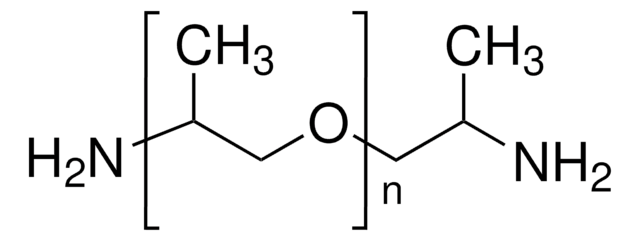753084
Poly(ethylene glycol) diamine
average MN 2,000, cross-linking reagent carboxyl reactive, amine
Sinônimo(s):
Poly(ethylene glycol) bis(amine), Polyethylene glycol, O,O′-Bis(2-aminoethyl)polyethylene glycol, Diaminopolyethylene glycol, PEG-diamine, Polyoxyethylene bis(amine)
About This Item
Produtos recomendados
Nome do produto
Poly(ethylene glycol) diamine, average Mn 2,000
Formulário
powder
peso molecular
Mw/Mn ≤1.4
average Mn 2,000
adequação da reação
reagent type: cross-linking reagent
reactivity: carboxyl reactive
Ω-final
amine
α-final
amine
arquitetura do polímero
shape: linear
functionality: homobifunctional
cadeia de caracteres SMILES
NCCOCCOCCN
InChI
1S/C6H16N2O2/c7-1-3-9-5-6-10-4-2-8/h1-8H2
chave InChI
IWBOPFCKHIJFMS-UHFFFAOYSA-N
Procurando produtos similares? Visita Guia de comparação de produtos
Categorias relacionadas
Descrição geral
Aplicação
Código de classe de armazenamento
11 - Combustible Solids
Classe de risco de água (WGK)
WGK 3
Ponto de fulgor (°F)
Not applicable
Ponto de fulgor (°C)
Not applicable
Escolha uma das versões mais recentes:
Já possui este produto?
Encontre a documentação dos produtos que você adquiriu recentemente na biblioteca de documentos.
Os clientes também visualizaram
Artigos
The use of hydrogel-based biomaterials for the delivery and recruitment of cells to promote tissue regeneration in the body is of growing interest. This article discussed the application of hydrogels in cell delivery and tissue regeneration.
Nossa equipe de cientistas tem experiência em todas as áreas de pesquisa, incluindo Life Sciences, ciência de materiais, síntese química, cromatografia, química analítica e muitas outras.
Entre em contato com a assistência técnica






